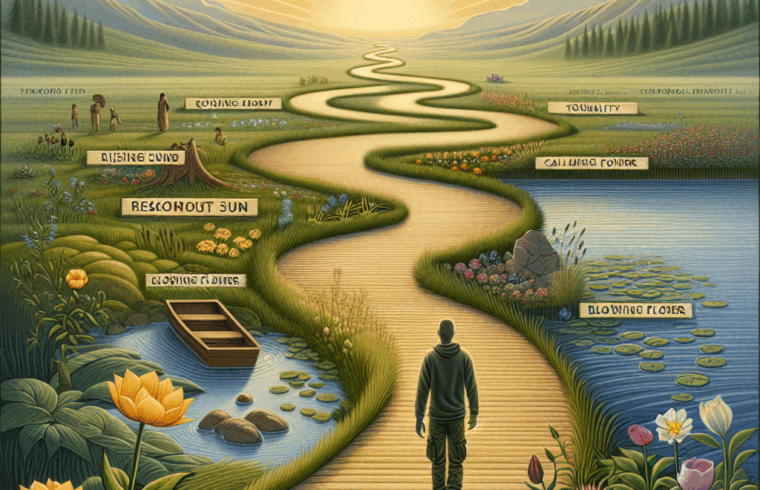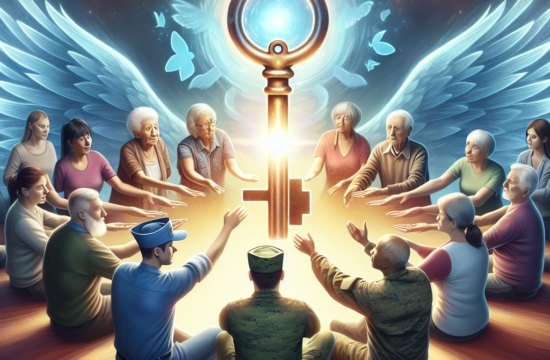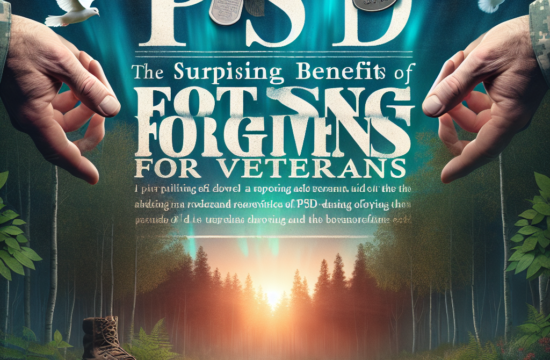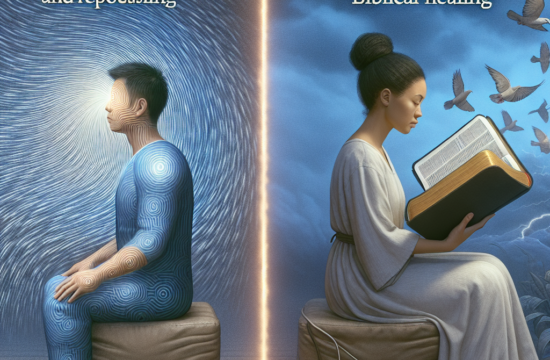==> Thank you for reading this post! Click Here If you are looking for support and Victory over PTSD.
Finding Faith in the Darkness
Understanding My Journey
When I first faced PTSD, my world felt completely shattered. I was overwhelmed with memories and emotions that I just couldn’t seem to shake. It was in this chaotic mess that I began seeking comfort in my faith. For me, walking with Jesus offered a guiding light that allowed me to even ask the tough questions: Why did this happen? How can I heal?
It was like I was stumbling around in the dark, searching for a switch, and slowly I found that faith was that switch. Jesus didn’t just give me answers; He provided a sense of belonging and hope that everything would eventually be okay. Through prayer and connection with God, I started recognizing a flicker of light within my darkness.
The journey wasn’t immediate. Some days felt heavier than others, but holding onto faith made the burden lighter. It helped me to see that healing is a process, one I was willing to undertake with the help of Jesus beside me.
The Power of Prayer
Prayer became my refuge, my little sanctuary. Initially, my prayers were filled with cries for help. I remember sitting in my room, tears streaming down my face, just pleading for relief. But over time, I learned that prayer doesn’t always need to be formal; it can be as simple as talking to a friend. I began to share everything with Jesus – my fears, my anger, and my hopes for the future.
In my journey, I found that prayer has a meditative quality. It gives me the space to reflect and find clarity. Sometimes, I’d just sit in silence, letting the Spirit wash over me. It’s in these moments of stillness that I often felt the strongest connection with Jesus, reminding me I wasn’t alone.
More importantly, it helped me to see that it’s okay to be vulnerable. I learned that laying my burdens down in prayer wasn’t just an act of faith but a step toward reclaiming my life. Jesus was there every step of the way, whispering words of comfort to my aching heart.
Engaging with Scripture
Diving into the Bible was like opening a treasure chest of wisdom. I began searching for verses that spoke directly to my struggles, verses about strength, peace, and healing. Each passage became a lifeline, guiding me through some very tough moments. I remember discovering Philippians 4:6-7, which spoke about bringing our worries to God with prayer and receiving peace in return.
There was something incredibly reassuring about connecting with the stories of others who faced trials. The scriptures are filled with narratives that resonate—with David’s cries, Job’s patient endurance, and Jesus’ own suffering. I realized I wasn’t alone—these were real people who overcame adversity through their faith. Knowing that their journeys led to triumph gave me hope that mine could too.
Journaling my reflections on scripture became a regular practice for me. I filled pages with thoughts, prayers, and insights that stemmed from my readings. This not only reinforced what I was learning but also created a tangible record of my growth and healing process.
Building a Supportive Community
Finding My Tribe
As I embarked on this challenging path, I quickly learned that I couldn’t do it alone. Finding a community of like-minded believers made such a difference. It’s amazing what sharing your story can do—more often than not, you’ll find someone who’s walking a similar path. I began attending support groups, church services, and connecting with online communities where people understood trauma and provided encouragement.
These connections were vital. They reminded me that healing is a shared journey. Having others around, who wouldn’t judge but instead empathized with my struggles, made me feel seen and heard. Their stories inspired me to keep pushing forward; I realized none of us were perfect, but together we could spread the love of Jesus and support each other’s healing journeys.
It was in this community that I felt the power of collective prayer. Whenever one of us faced a tough day, the others would step up to pray, creating a tapestry of strength that surrounded us. It truly demonstrated that while our individual journeys are important, we can lean on one another, rooted in Christ’s love.
Serving Others
Ironically, one of the biggest healing agents for me was serving others. Initially, I was hesitant, thinking, “How can I help anyone when I’m feeling so broken?” But Jesus taught me that we can find healing through giving. I started volunteering at local shelters and helping in community outreach initiatives.
Get Support and Help with Recovery! Visit us for more Information and Support
Serving others not only shifted my focus away from my struggles but also allowed me to experience joy and purpose. I found that as I met others in need, my own burdens felt a little lighter. Each time I reached out to lend a hand, I saw God working through me, reminding me of the bigger picture and my role in spreading love.
Plus, being part of something larger than myself reignited my spirit. It connected me deeper to my faith, teaching me how to embrace hope even in hardship. Jesus showed me that by walking alongside others, I was, in turn, walking in His footsteps—a humbling reminder of love in action.
Trusting the Journey
Patience in Healing
If there’s one lesson I deeply grasped, it’s that healing is a marathon, not a sprint. There were times I wanted immediate resolution to my pain. Oh man, I remember those days of being frustrated when progress felt slow. Yet through prayer and reflection, I had to accept that everyone’s journey unfolds at their own pace, and that’s a beautiful thing.
Trusting the journey often felt uncomfortable. I wrestled with doubt and uncertainty, but I realized that surrendering my timeline to Jesus was key. I began to focus on my growth and to celebrate the little victories along the way. Recovery isn’t linear; there are ups and downs, but each step, no matter how small, is part of a larger plan.
Jesus reassured me through my struggles. I learned to see challenges not as setbacks, but lessons in growth. With every setback, I felt a bit of resilience building, slowly dismantling the chains that once bound me. Trusting in the process became a crucial step toward my eventual emotional freedom.
Embracing Hope
Finally, embracing hope has been foundational. It’s easy to lose sight of hope when you are grappling with the realities of PTSD, but leaning onto my faith kept it alive. Jesus’ love instilled in me the belief that brighter days were ahead. I started to visualize my future—a life not just filled with survival, but genuine joy and purpose.
In embracing hope, I reminded myself daily that healing might take time, but it is absolutely achievable. I began speaking affirmations over my life, reminding myself that I am strong, capable, and loved. Surrounding myself with positive influences—friends, podcasts, and uplifting readings—reinforced that ever-present flicker of hope in my heart.
The more I focused on hope, the more I saw transformation in my mind and soul. Jesus turned my desperation into a desire to embrace the future with arms wide open. And let me tell you, the journey towards healing is one worth taking, filled with countless blessings yet to be uncovered.
FAQ
1. How can faith help in PTSD recovery?
Faith can provide comforting guidance during tough times, offering a supportive community and encouraging individuals to lean on their beliefs. It can also foster hope and resilience when navigating challenges.
2. What role does prayer play in the healing process?
Prayer allows for personal expression of emotions and creates a meditative space for reflection. It can offer comfort and a sense of release, connecting individuals more deeply with their faith during recovery.
3. How can I find a supportive community for PTSD?
Look for local support groups or online communities related to PTSD and faith. Engaging with others who share similar experiences can offer encouragement and understanding during your healing journey.
4. Why is serving others beneficial in recovery?
Volunteering shifts focus from personal struggles and reinforces a sense of purpose. It allows individuals to connect with their community and feel fulfilled through acts of kindness, promoting healing through giving.
5. How do I remain hopeful during my recovery?
Focus on small victories and remind yourself that healing is a process. Surround yourself with positive influences and affirmations, keeping sight of your goals and the brighter future that lies ahead.













